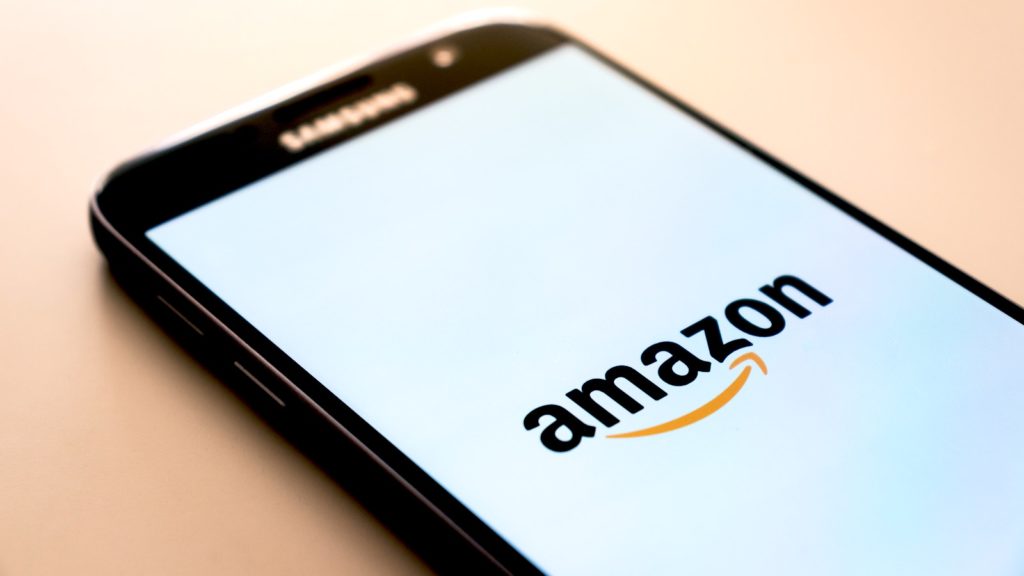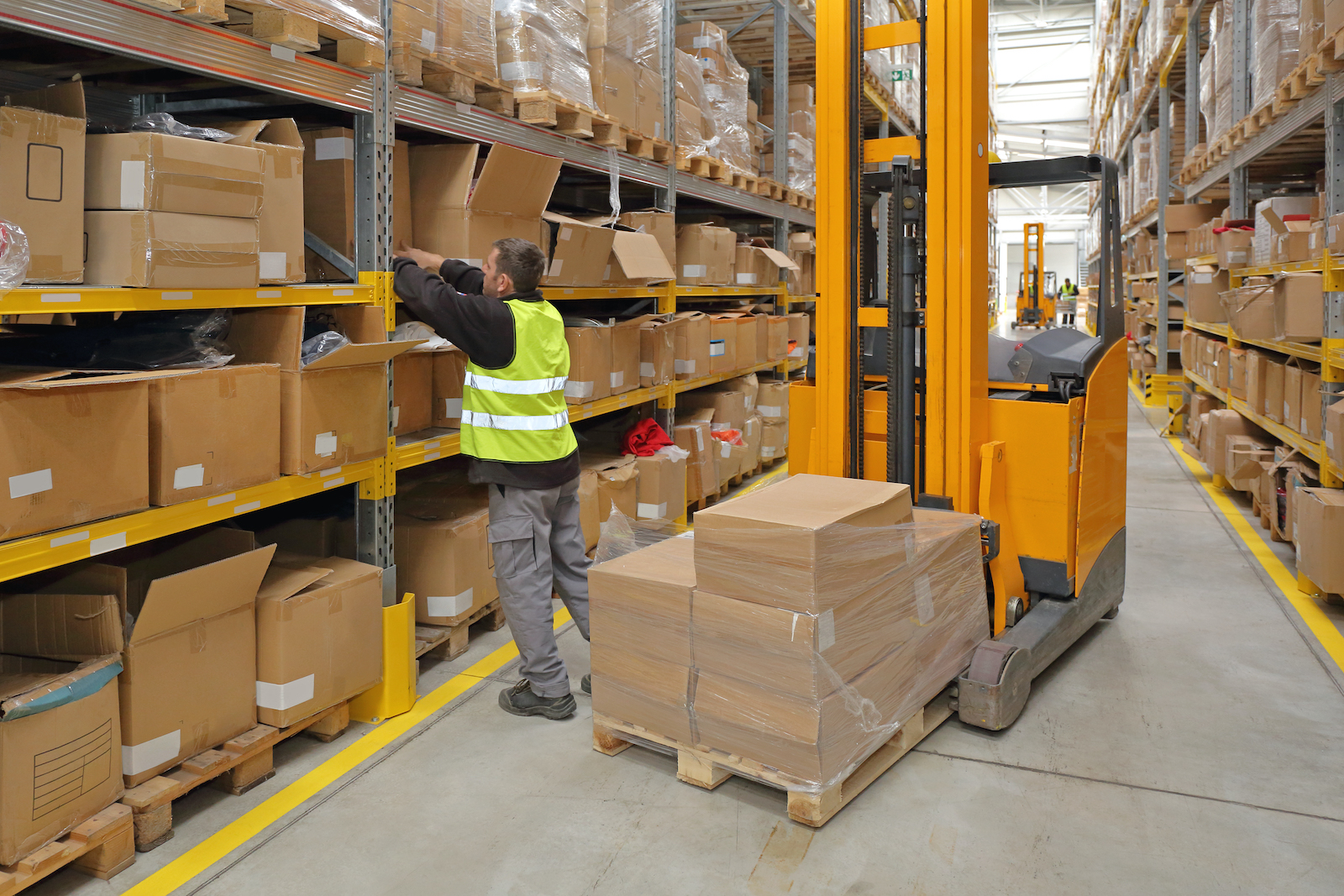Table of Contents
** Minutes
1. Having no pricing and fulfilment strategy
2. Having no product listing strategy
3. Not advertising on Amazon at all
4. Advertising incorrectly on Amazon
In today’s day and age, consumers are doing a lot of their shopping online, and there’s no ecommerce platform larger than Amazon. Shoppers can buy almost anything on Amazon for a competitive price with lightning fast 2-day shipping.
Even though Amazon is an ecommerce behemoth, it’s not always easy to sell your products there. Here are the top five mistakes businesses make on Amazon, why they matter, and how you can avoid making them.
1. Having no pricing and fulfilment strategy
Businesses selling on Amazon need to have a well-thought-out pricing and ecommerce fulfilment strategy in order to be successful. In fact, fulfilment and pricing are two of the main factors that determine if you are winning the Buy Box on Amazon.
In the age of the COVID-19 pandemic, how are Amazon sellers surviving the coronavirus? More than a third have struggled to keep sales consistent. Now more than ever, it’s critical for Amazon sellers to understand how they can optimise their product listings and order fulfilment.
FAQs about Amazon pricing and selling
Let’s break down some frequently asked questions that Amazon sellers have and the importance of these components in your overall business’s success.
What is the Buy Box?
The Buy Box is a feature that contains the “buy” and “add to cart” buttons. It’s located in the upper right-hand corner of product pages and the vast majority of Amazon sales go through it.
What does “winning the Buy Box” mean?
It means that you are the preferred seller of the product you’re selling, and when a user clicks the “Buy” or “Add to cart” button, they are purchasing the product from you and not another seller.
What’s the value of winning the Buy Box?
About 90% of sales on Amazon go to the seller who is winning the Buy Box. It’s valuable real estate that will boost your overall sales. Additionally, you must be winning the Buy Box in order to run sponsored product ads.
How do I win?
There are many factors that play into the complex Buy Box algorithm. Two of the major components are your pricing and fulfilment strategies.
How do I choose my pricing strategy?
The pricing strategy you choose for your brand and products will depend on many factors. Whether you’re a manufacturer, brand owner, retailer, or exclusive seller, the types of competition and position in the market will determine how you’ll want to price your products.
There is no simple way to outline a pricing strategy for every company on Amazon, but know that it will most likely take some testing and measuring to land on the right price for your business and products.
What is manual pricing?
Manual pricing lets you change the price of your product at will. If you notice your competitors are selling a similar product for less money, you can lower the price of your product at any time. Your price is not automated with this strategy, and therefore you have greater control over winning the Buy Box. Your price changes are also dependent on you physically and manually monitoring the competition.
What is rule-based pricing?
Rule-based pricing lets you automate your pricing by allowing Amazon to monitor the prices of your competitors and editing your price based on that. For example, you can create a rule that keeps your price slightly above or below the lowest marketplace price for your product, which will increase your chances of winning the Buy Box.
What is algorithmic pricing?
Algorithmic pricing takes into account all of the variables that will affect your chances of winning the Buy Box. This means your price will fluctuate based on criteria such as supply, demand, and competition. Other factors can play a role as well, such as the time of year and whether your business is seasonal. Algorithmic pricing is done through a third-party, outside of the Amazon platform.
What are my fulfilment options on Amazon?
Amazon order fulfilment refers to the picking, packing, and shipping of online orders to the end customer, or, simply stated, how you’re getting your product to the consumer. There are three fulfilment options for Amazon sellers that are each handled differently.
Fulfilment by Amazon (FBA)
Fulfilment by Amazon means Amazon stores and ships your products according to their standards. With this strategy, you’ll receive the coveted Prime Status and you will be eligible for one or two-day shipping. Something else to consider is that you’ll give up control of your brand messaging in the package that your customer receives. Your products will ship in a smiling Amazon-branded box.
Seller-Fulfiled Prime (SFP)
Seller-Fulfiled Prime means you are responsible for warehousing and shipping your products. This strategy also lets you earn Prime Status as long as you are able to meet Amazon’s strict fulfilment guidelines.
This helps you eliminate some FBA fees that you’d incur from Amazon. However, meeting Amazon’s strict shipping standards could prove costly, especially if you only have one shipping location in the US. Some third-party fulfilment (3PL) companies can help control shipping costs and still allow for businesses to provide Seller-Fulfiled Prime shipping.
Fulfiled by Merchant (FBM)
Fulfiled by Merchant means you warehouse and ship your own products (or a 3PL does). This strategy does not let you receive Prime Status, but you’ll be able to determine your own ecommerce shipping times and have full control over your brand messaging since your products won’t be tied to Amazon’s packaging.
2. Having no product listing strategy
Your product listing is critical for consumers deciding whether or not to buy your product, so it’s important that you have a product listing strategy that works. Here are a few key areas in your product listing to focus on to set yourself up for success.
Optimising your product information for the Amazon algorithm
There are a few things you can do to improve your product information to please the Amazon algorithm.
Keywords
Make sure you’re using relevant keywords throughout your product listing, as these will determine what kind of searches you’re showing up in.
Completeness
Try to fill out as much information as possible when you’re writing up your product listing, as Amazon favours listings that have detailed information. Plus, the more information consumers have about your product upfront, the more likely they are to buy.
You should also be cautious about sending your feed directly from your website. Some Amazon fields aren’t in typical product feeds and would therefore be left blank. Make sure you’re filling out all of the applicable fields.
Additional content
Utilise enhanced brand content to describe your product in a unique way. This feature lets you include images and text placements in the product description to tell more of a story about your product. For example, you could include an infographic about how to use your product within the product listing.
Optimising your product listing titles for the consumer
In addition to pleasing Amazon, you need your listings to appeal to shoppers. Here are a couple important ways to improve your clickthrough rate and conversions.
Titles
You need to find a balance of keyword relevancy and readability in your product listing title. Your product title needs to contain the most important information, like keywords and product details, but still be concise enough that a potential buyer will be willing to read the title in its entirety.
Other details to include in the title include your brand name, the product name, and specific features about the product. If you’re using Amazon Ads, test the titles to see how Amazon will truncate the title to make sure the most important information is still visible to shoppers.
Informative descriptions
Your descriptions need to clearly communicate unique value propositions and product features. Expand on key features and benefits, and clearly state what sets your product apart from competitors. Having detailed descriptions (and clear titles) for your products will also help you reduce the chance of returns and negative reviews.
High-quality images and videos
Your featured product image is going to be what catches a consumer’s eye first and what will really allow your product to stand out. Make sure your featured image is in high-definition and clearly shows what your product is.
Images are equally important once a potential buyer clicks on your product listing — they can be the deciding factor whether or not someone decides to make a purchase. Your images should show your product from different angles and show your product being used in real life so that consumers get an idea of how it will fit into their own lives.
If your listing on Amazon allows for you to upload product videos, do it. Videos that show a 360-degree view of your product and instructions for the use or installation are some of the most valuable things to showcase.
3. Not advertising on Amazon at all
It can be difficult to get your products noticed on Amazon and distinguish yourself from the competition — so much so, that many businesses decide against advertising on the platform entirely. Amazon is its own online marketplace and if you’re not advertising there, you won’t have access to it. Here are some of the potential benefits of using the ad platform.
Increase conversions
Amazon Ads have exceptionally high conversion rates. The average conversion rate on Amazon pay-per-click ads is 10%. Compared to other advertising platforms, that’s outstanding! People who are shopping on Amazon already have high purchase intent, which makes it easier for you to increase your sales by utilising paid ads.
Improve rankings
Advertising on Amazon has shown to have a positive impact on your organic performance. As you sell more, your sales rank increases. Organic rankings on Amazon update often throughout the day, so be sure to test and measure the impact your ads and sales are having on your organic traffic.
Get discovered by more people
If you’re not advertising on Amazon, you’re missing out on potential market share. It’s said that 42% of Amazon shoppers never scroll beyond the first page. If you’re not ranking organically on the first page, you’ll be missing out on more than half of all shoppers.
Beat competitors
Advertising on Amazon isn’t so crowded yet that you may have the first-mover advantage. Although there are millions of companies already on Amazon, the platform has seen tremendous growth year-over-year with consumers buying online more frequently. Despite this volume, competition is still relatively low on Amazon Ads and there’s room for new players to make a splash.
4. Advertising incorrectly on Amazon
Even if you’re already advertising your products on Amazon, you might not be advertising correctly. Here are some common mistakes businesses make when they advertise on Amazon, and how you can avoid them.
Poor account structure
Your advertising campaign structure determines how your products will be categorized. Poorly structured campaigns lack categorization and can lead to inaccurate reporting. To structure your campaigns properly, make sure you utilise detailed categorization methods so that similar products are grouped together in the same campaign.
Not utilising all ad types
Many sellers try advertising with just one ad type, such as sponsored product ads. This is a mistake, since not every consumer looks at the same ads or treats them the same way. A better strategy is diversifying your ad types to include others such as headline search ads and product display ads.
Not having a competitor strategy
Your competition is everywhere on Amazon, and competitors can even show ads in different spots on your product’s listing page. This makes it easy for businesses to get undercut by their competitors. If you don’t have a competitor strategy on Amazon, your sales could diminish.
One effective strategy is targeting your competitor’s keywords to get in front of people searching for a competing brand’s products. Another strategy is targeting a competitor’s product detail page, which involves displaying your ads on their product’s listing.
Placement and targeting bid modifiers
Placement and targeting bid modifiers are important optimisation tools that can increase your ad visibility. If you’re not using these, your ad performance could suffer. Placement bid modifiers give you the ability to bid up on different placements that you ads could show in. Targeting bid modifiers give you the ability to adjust your bid based on what type of targeting is being used (e.g., close or loose match).
Not utilising negative keywords
Negative keywords allow you to select certain words or phrases you don’t want to show up for. For example, if you sell a phone case for the iPhone 10, but not for the iPhone 4, you could exclude “4” (your negative keyword) from search queries so you don’t show up for “iPhone 4 phone case” searches.
Negative keywords prevent your ads from showing up in irrelevant searches and wasting your budget. Continuously and thoroughly review your search terms report to find irrelevant terms, and add those to your negative keyword list to ensure you’re using your budget effectively.
Lack of testing
Amazon Ads is a platform that’s constantly evolving and changing. Good advertisers test out different strategies and measure the performance (without testing everything all at once). If a strategy doesn’t work the first time, try altering it and testing it again. You should test many different methods to see what works the best.
5. Not leveraging experienced Amazon partners
Amazon partners can help you with every single issue covered above. And while it’s true these may cost your business more money, the value that Amazon partners provide should be more than worth it. Here are some of the benefits of working with a third-party to manage your Amazon account.
Resource allocation
Your business, like any business, has a limited number of resources. Think about what you could be using your internal resources for if they were not trying to learn and manage your Amazon channel. It could be better to outsource your Amazon marketing strategy to the professionals, and free up more of your internal resources.
New feature adoption
Amazon does not always announce new features they release. Since Amazon partners typically work with a multitude of clients with a variety of needs, they tend to be on the forefront of new feature adoption and testing. Amazon partners are working in Amazon accounts every day. If you’re not in your account that frequently, you could be missing out on incredibly powerful features without realizing it.
Access to betas
The best Amazon partners always have access to new product betas before they get released to the general public. Working with an Amazon partner means your business might be able to use these betas sooner than if you manage Amazon Ads by yourself.
Elevated support
If you’re having a major issue with your Amazon ads, you’re probably not alone. Getting issues fixed can sometimes be a time-consuming and stressful process. Working with an Amazon partner means that Amazon will prioritise your issue, so that you can get a quicker resolution.
Advanced reporting
The average seller can’t get access to all of the advanced reporting that Amazon offers, but an Amazon partner can. Partners have internal reports and analysis, and can request reports for category performance and forecasts. If you don’t work with an Amazon partner, you’ll never be able to access some of these cool features.
Learn more about ShipBob
Interested in learning more about ShipBob as a fulfilment provider? Connect with our team by requesting a quote below.



